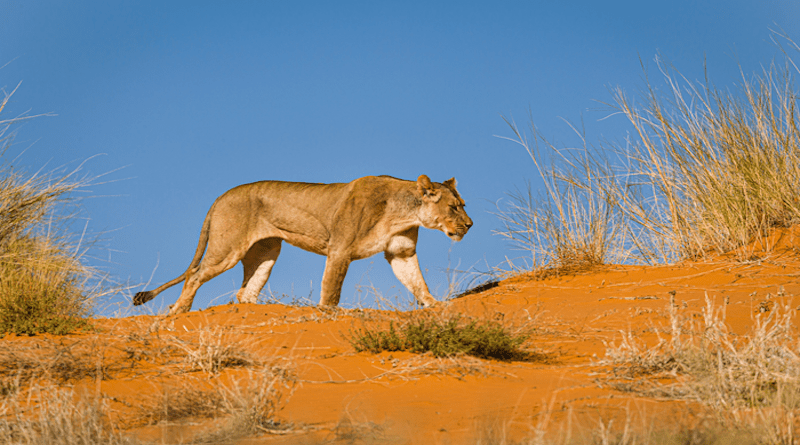Trends And Biases In African Large Carnivore Population Assessments: Identifying Priorities And Opportunities
African large carnivores have undergone significant range and population declines over recent decades. Although conservation planning and the management of threatened species requires accurate assessments of population status and monitoring of trends, there is evidence that biodiversity monitoring may not be evenly distributed or occurring where most needed.
New research published in the Open Access, peer-reviewed journal PeerJ provides the first systematic review of African large carnivore population assessments published over the last two decades (2000-2020), to investigate trends in research effort and identify knowledge gaps. The article is a timely review for a very important conservation topic, and provides an informed broad-scale framework for decision-making that is currently lacking in the field of large carnivore research in Africa – to guide funding, research investment, and priorities.
Researchers from the University of Oxford, the University of KwaZulu-Natal, Endangered Wildlife Trust, South Africa and Panthera used generalised linear models and generalised linear mixed models to identify taxonomic and geographical biases in previously published research into large carnivores in Africa, and also uncovered biases associated with land use type and author nationality.
“Research effort is significantly biassed towards lions (Panthera leo) and against striped hyena (Hyaena hyaena), despite the latter being the species with the widest continental range. African wild dogs (Lycaon pictus) also exhibited a negative bias in research attention, although this is partly explained by its relatively restricted distribution,” write the authors. “Our findings highlight the urgent need for additional cheetah population assessments, particularly in northern, western, and central Africa. Due to their large country ranges, studies in Chad and Ethiopia should especially be considered a priority.”
Population assessments have been biassed towards southern and eastern Africa, particularly South Africa and Kenya. Northern, western, and central Africa are generally under-represented. Most studies have been carried out in photographic tourism protected areas under government management, while non-protected and trophy hunting areas received less research attention.
Outside South Africa, 41% of studies did not include authors from the study country, suggesting that significant opportunities exist for capacity building. Overall, large parts of Africa remain under-represented in the literature, and opportunities exist for further research on most species and in most countries.
The authors developed recommendations for actions aimed at overcoming the identified biases and provide researchers, practitioners, and policymakers with priorities to help inform future research and monitoring agendas.

